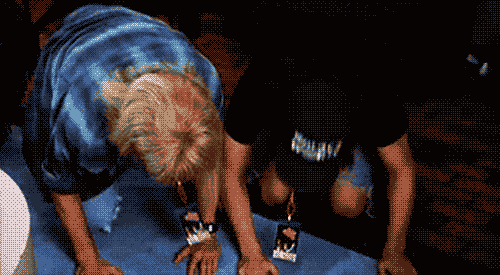Anemones and other photosynthetic corals obtain their complement of Zooxanthellae from the water column in the wild. In many case , with stress Anemones can completely loose all of their Zooxanthellae. In case like this, we can jump-start the process by feeding them with live viable Zooxanthellae from another animal of the same species if at all possible. I have done multiple procedure like this in my 40 years of keeping reef aquarium. I like to document this here. This tread should help many reefers, some how ended up with a bleached anemone.
Tridacna farmers also feed new young clams by pulverize and adult clam and mixed it in the water of baby clam tanks. Baby clams will take these Zooxanthellae internally and establish their own Zooxanthellae population. This is a very straight forward procedure and very easy to perform as documented below.
1. Below is a small completely Bleached S. gigantea anemone I got from Petco. He is healthy in every way except completely bleached.

2. Obtained a tentacle from my healthy donor. Since my anemone is so small, I will just use a small piece of fish, and just use 1 tentacle. Gigantea are really sticky so getting a tentacles or two is not difficult. Zooxanthellae are puny little organism. We need to keep the condition stable for them to survive. If we don't they just die and we can do all of these for nothing. I learn to keep the tentacle in most solution. If the salt solution just dry out a little, the change in salinity will kill the Zooxanthellae. Keep them in small amount of tank water and use it quickly. Imagine just 20% of a tiny amount of water evaporated, the resulting shift in salinity of the salt water left behind can be drastic indeed.

3. Stuff the tentacle into a piece of food, salmon in this case. As with salinity, temperature shock can do the Zooxnthellae in. I would soak the salmon in tank water to keep the temperature up to tank temperature. Still cold or still frozen Salmon will not do. The ice crystal in the salmon can dilute the salt water in the tentacle, the temperature shock can kill the Zooxanthellae. Both of these problem can be solve by soak the salmon, or other fish in tank water until temperature equalized.

4. Picture of my anemone before I feed him the Zooxznthallae laced food was the first picture above. Bellow are pictures of him eating the Zooxanthellae food.



5. After about 2 weeks, you should see the first sign of Zooxanthellae repopulate the tentacles of the bleached anemone. It looks like the tentacles are getting "dirty" as show in the picture below

6. More Zooxanthellae

7. Finally a fully healthy S. gigantea

Awesome

Tridacna farmers also feed new young clams by pulverize and adult clam and mixed it in the water of baby clam tanks. Baby clams will take these Zooxanthellae internally and establish their own Zooxanthellae population. This is a very straight forward procedure and very easy to perform as documented below.
1. Below is a small completely Bleached S. gigantea anemone I got from Petco. He is healthy in every way except completely bleached.
2. Obtained a tentacle from my healthy donor. Since my anemone is so small, I will just use a small piece of fish, and just use 1 tentacle. Gigantea are really sticky so getting a tentacles or two is not difficult. Zooxanthellae are puny little organism. We need to keep the condition stable for them to survive. If we don't they just die and we can do all of these for nothing. I learn to keep the tentacle in most solution. If the salt solution just dry out a little, the change in salinity will kill the Zooxanthellae. Keep them in small amount of tank water and use it quickly. Imagine just 20% of a tiny amount of water evaporated, the resulting shift in salinity of the salt water left behind can be drastic indeed.
3. Stuff the tentacle into a piece of food, salmon in this case. As with salinity, temperature shock can do the Zooxnthellae in. I would soak the salmon in tank water to keep the temperature up to tank temperature. Still cold or still frozen Salmon will not do. The ice crystal in the salmon can dilute the salt water in the tentacle, the temperature shock can kill the Zooxanthellae. Both of these problem can be solve by soak the salmon, or other fish in tank water until temperature equalized.
4. Picture of my anemone before I feed him the Zooxznthallae laced food was the first picture above. Bellow are pictures of him eating the Zooxanthellae food.
5. After about 2 weeks, you should see the first sign of Zooxanthellae repopulate the tentacles of the bleached anemone. It looks like the tentacles are getting "dirty" as show in the picture below
6. More Zooxanthellae
7. Finally a fully healthy S. gigantea
Awesome
Last edited:




















